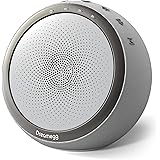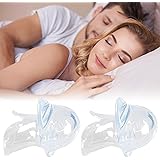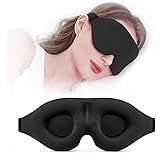It is estimated that over 50% of adults aged 65 and older experience chronic sleep disturbances. Many seniors also report daily aches and pains. These issues are often interconnected with sleep posture. Proper alignment during rest is critically important. This includes the head, neck, and spine. Significant improvements can be observed quickly. Even small adjustments offer substantial relief. Dr. Michael Bruce, the Sleep Doctor, discusses this above. This article expands upon his valuable insights. It provides an in-depth exploration of optimal sleeping positions for seniors.
The quest for restorative sleep becomes more urgent with age. Certain anatomical shifts occur. Tissue elasticity decreases. Joints may become less flexible. Moreover, pre-existing health conditions can influence comfort. Therefore, individualized consideration is paramount. A position that alleviates pressure for one person may exacerbate pain for another. The ultimate objective remains consistent. It is to achieve a neutral spinal alignment. This minimizes undue stress on the musculoskeletal system. It also supports vital physiological processes. Personal comfort preferences are always respected. However, physiological benefits should guide decisions.
Optimizing Side Sleeping for Seniors
Side sleeping remains a highly favored position. Its popularity is evident across age groups. However, for seniors, specific advantages are noted. Sleeping on the left side is particularly beneficial. It reduces pressure on the Vena Cava. This is the body’s largest vein. Its function is to return deoxygenated blood. This blood flows from the lower body to the heart. Improved cardiac efficiency is therefore fostered. Blood pooling, which contributes to varicose veins, is mitigated. This position can also maintain open airways. Snoring and mild sleep apnea symptoms may be reduced. Acid reflux and heartburn can also be eased. Gastric juices are kept lower than the esophagus.
A compelling benefit for those over 50 is also observed. Side sleeping has been shown to reduce detrimental proteins. These proteins are linked to cognitive disorders. Alzheimer’s disease is one such condition. This is thought to be related to the glymphatic system. This system efficiently clears brain waste. Its activity is enhanced in this sleep posture. Therefore, cognitive health may be proactively supported. These myriad advantages underscore its significance. However, proper execution is key. Poor alignment can lead to new discomforts.
Achieving Proper Side Sleeping Alignment
Despite its many benefits, side sleeping presents challenges. Improper alignment can worsen pain. Neck, shoulder, hip, and lower back pain are common complaints. The body’s entire weight rests on these areas. Maintaining proper spinal congruence is essential. This requires careful attention to support. Without it, undue strain is placed on joints. Muscular tension is also increased. This often leads to fragmented sleep. Waking with stiffness becomes a daily occurrence.
The selection of an appropriate pillow is critical. An incorrect pillow height can be detrimental. A pillow too high causes cervical flexion. Conversely, one too low results in extension. Both disrupt the natural curve of the neck. This misalignment can lead to significant neck pain. It also impacts shoulder comfort. The ideal pillow maintains a perfect plane. Your neck and spine should align seamlessly. Cervical contour pillows often achieve this. They cradle the head effectively.
Another crucial aspect involves the knees. When knees touch in side sleeping, hip pressure increases. This can rotate the pelvis. Lower back tension often ensues. Back pain can consequently intensify. A pillow placed between the knees alleviates this. It maintains proper hip alignment. This prevents the top leg from pulling. Strain on the lumbar spine is reduced. Specialized knee pillows are available. They are compact and secure. They stay in place even with movement. This ensures continuous support throughout the night. Optimal spinal support is thus achieved.
Exploring Back Sleeping Benefits for Seniors
The back sleeper position is highly recommended by experts. Its advantages include superior muscular support. Less neck strain is typically experienced. The body’s weight is distributed evenly. This spreads across the entire skeletal frame. Excessive pressure points are thereby minimized. This can be especially beneficial. Individuals with chronic pain often find relief. The spine is naturally elongated. This promotes a neutral position. Many prefer this symmetrical posture. It offers a sense of stability during sleep.
Conversely, back sleeping is not without its drawbacks. An increased risk of snoring is often observed. Sleep apnea symptoms may also worsen. Gravity can cause the tongue to fall backward. This obstructs the upper airway. There is also data suggesting a heightened chance. Gastroesophageal reflux disorder (GERD) might increase. Stomach acid can more easily reflux into the esophagus. Furthermore, for those already suffering from back pain, this position can be uncomfortable. It is important to weigh these factors. Personal health conditions must always be considered.
Achieving Proper Back Sleeping Alignment
Proper alignment in the back sleeper position is crucial. The neck must remain on an even plane. It should align with the spine. Therefore, pillows that are too high or too low must be avoided. Generally, a lower profile pillow is needed. This contrasts with side sleeping requirements. A thin, supportive pillow often suffices. Its purpose is to support the cervical curve. The head should not be propped too high. The neck should maintain its natural lordosis.
The lower back also requires specific attention. Back sleeping often results in an anterior pelvic tilt. This creates a space between the mattress and lumbar spine. This unsupported arch can lead to discomfort. It places stress on the lumbar vertebrae. Proper alignment aims to fill this space. The hip flexors should be relaxed. This brings the knees up slightly. A more neutral pelvic position is achieved. A pillow or two placed under the knees facilitates this. This reduces the arch in the lower back. It supports the natural spinal curvature. Lumbar pressure is significantly reduced. This simple adjustment ensures comprehensive support.
Enhanced Support for Back Sleepers: Adjustable Beds and Wedge Pillows
For seniors, additional tools can enhance back sleeping. An adjustable base bed frame is particularly advantageous. Raising the head of the bed utilizes gravity. This can effectively reduce snoring. Airway obstruction is lessened. Furthermore, mobility is greatly improved. Getting in and out of bed becomes easier. The incline allows a smoother transition. Individuals can swing their legs out. They then stand with less effort. This feature offers increased independence. It also enhances overall safety.
When an adjustable bed is not feasible, alternatives exist. A wedge pillow can serve a similar purpose. This is a triangle-shaped foam pillow. It provides an incline for the upper body. It mimics the benefits of an adjustable bed. Snoring can be reduced. Acid reflux symptoms may also be alleviated. These pillows are versatile. They can support the back or elevate the legs. This makes them a cost-effective solution. They offer many similar benefits. Both options promote superior sleep posture. Enhanced comfort is therefore achieved for back sleepers.
Sleeping Postures to Avoid as We Age
Certain sleeping postures should be actively avoided. All too often, seniors fall asleep in recliners. Lazy Boy chairs or couches are common culprits. These positions are not ergonomically sound. The body was not designed for this. The head often falls forward. Alternatively, it is forced backward. This places tremendous strain on the neck. Muscles connecting to the neck become overstretched. These positions can exacerbate existing issues. They may also create new ones. Prolonged strain can lead to chronic pain. Sleep quality is inevitably compromised.
Many individuals adopt these positions unintentionally. They might feel it makes breathing easier. They are effectively modifying their posture. This lessens the effects of underlying sleep apnea. However, this offers only temporary relief. It fails to address the root cause. This compensatory behavior is ultimately harmful. It compromises spinal health. It is essential to recognize this pattern. Professional evaluation for sleep apnea is advised. Home sleep tests are now widely available. They provide convenient screening. Early diagnosis allows for effective treatment. This avoids reliance on detrimental postures. Addressing sleep apnea directly will lead to far greater long-term benefits for sleeping positions for seniors.








